The active weather during the period from May 6th to May 10th resulted in 85 severe weather reports across northern and central New Mexico. There were 6 confirmed tornados, 54 reports of large hail, 14 high wind gusts or wind damage reports, and 1 flash flood. The following is a breakdown of severe weather reports for the May 6-10, 2017 period. Click the image thumbnails below to view a larger map of tornado/funnel cloud, hail, and wind reports.
TORNADO/FUNNEL HAIL WIND
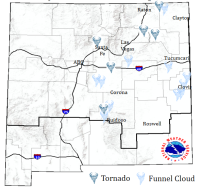

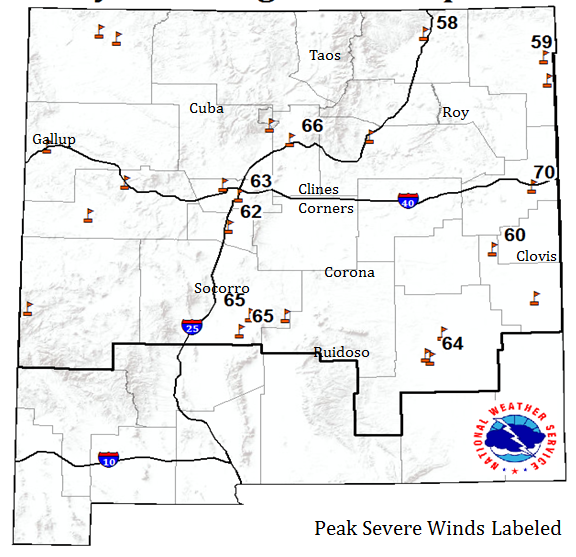
May 6th: The combination of downburst winds and thunderstorm outflows produced wind damage across the Bloomfield and Aztec area. Numerous trees and power lines were blown down producing power outages and damage to homes and vehicles. An isolated thunderstorm over the Raton area also produced strong winds but with no damage.

May 7th: A cluster of thunderstorms moving north across Eddy and Chaves counties produced a peak wind gust to 64 mph at Roswell shortly after sunset. No significant damage occurred with these winds.

May 8th: The first round of thunderstorms produced ping pong ball size hail in the Fort Sumner area. The first tornado of the 2017 severe weather season touched down to the north of Roy just after 6 pm. A second cluster of thunderstorms developed over Chaves County around 8pm resulting in golf ball size hail on the west side of Roswell. Heavy rainfall that trained over the same area of southeastern Guadalupe and northeastern De Baca counties generated torrential rainfall amounts within the Alamogordo Creek drainage. Video of flash flooding was captured along the creek near U.S. Highway 84 north of Fort Sumner.
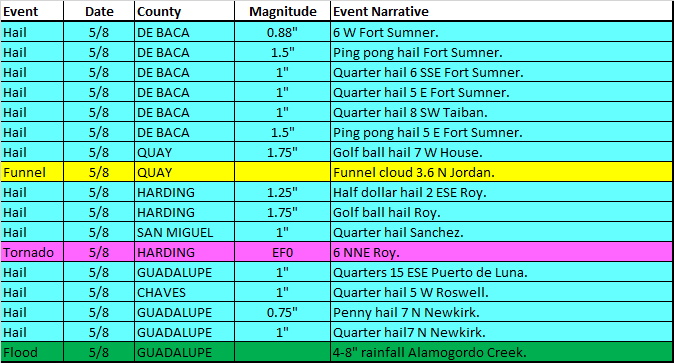
May 9th: Isolated thunderstorms developed shortly after midnight in the area from Santa Fe to Farmington and produced quarter size hail with heavy rain and and strong winds. A large area of showers and thunderstorms developed shortly after sunrise over central New Mexico and moved north across the Albuquerque and Santa Fe metro areas through the early afternoon. Several funnel clouds and large hail were reported around the Estancia Valley. A brief tornado developed near the Santa Fe airport shortly after noon with minor damage reported. A major hailstorm struck the Interstate 25 corridor near Kewa Pueblo, resulting in damage to homes and vehicles. The next wave of storms that developed over central New Mexico produced tornadoes near Carrizozo, Clines Corners, and Wagon Mound. Large hail up to the size of golf balls was also reported with these storms. More storms firing up around the Albuquerque metro area produced nickel to quarter size hail from Rio Rancho north into the Jemez Mountains. Severe thunderstorms continued to pound eastern New Mexico well into the evening hours with golf ball to hen egg size hail producing damage in areas around Roswell and Tucumcari.
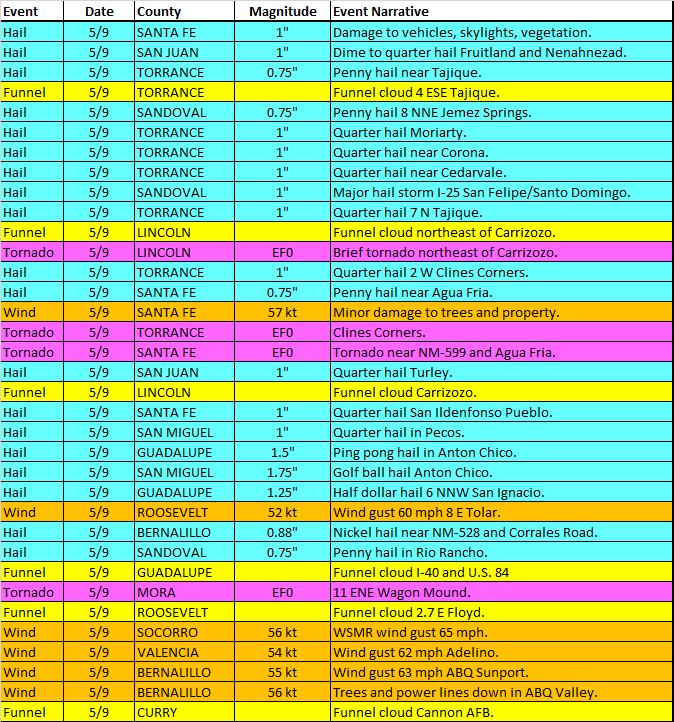
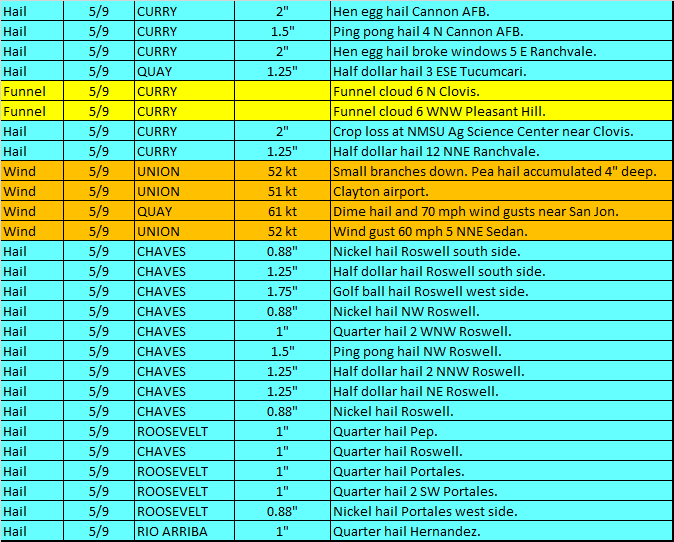
May 10th: An isolated thunderstorm that developed just south of U.S. Highway 87 east of Raton moved north and produced a brief tornado along the Johnson Mesa near NM-72. The tornado moved through rural countryside and produced no damage.

